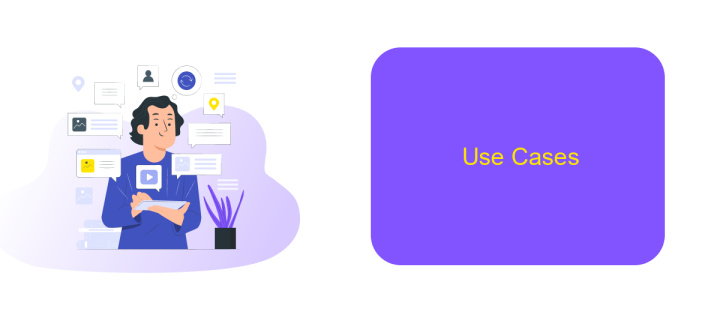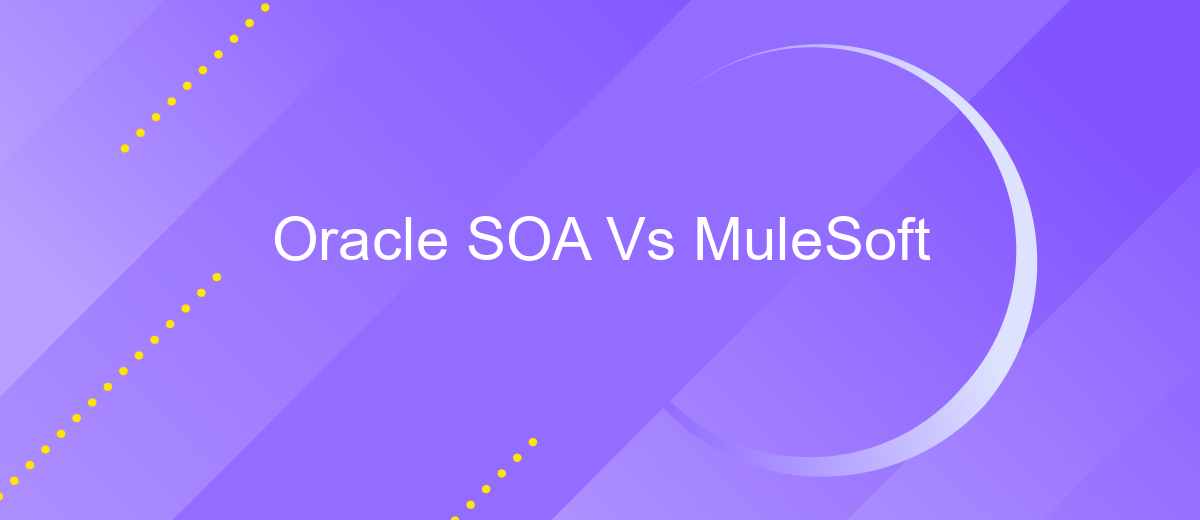Oracle SOA Vs MuleSoft
When it comes to integrating diverse systems and streamlining business processes, Oracle SOA and MuleSoft stand out as two leading solutions. This article delves into a detailed comparison of these platforms, examining their features, capabilities, and unique strengths. Whether you're a business leader or a technical expert, understanding the nuances of Oracle SOA and MuleSoft can guide you in making an informed decision.
Introduction
In today's rapidly evolving digital landscape, businesses are increasingly relying on integration platforms to streamline their operations and enhance efficiency. Two prominent players in this domain are Oracle SOA and MuleSoft, each offering unique features and capabilities to address complex integration needs.
- Oracle SOA: Known for its robust service-oriented architecture, Oracle SOA provides a comprehensive suite of tools for building, deploying, and managing integrations.
- MuleSoft: Renowned for its API-led connectivity approach, MuleSoft enables businesses to connect applications, data, and devices seamlessly.
- ApiX-Drive: A versatile integration service that simplifies the process of connecting various platforms and automating workflows without requiring extensive technical expertise.
Choosing the right integration platform is crucial for businesses aiming to achieve seamless connectivity and operational efficiency. This article delves into the key differences between Oracle SOA and MuleSoft, helping you make an informed decision based on your specific integration requirements and business objectives.
Key Differences

Oracle SOA and MuleSoft are two prominent integration platforms, each with unique features and capabilities. Oracle SOA Suite is a comprehensive, standards-based software suite that enables enterprises to build, deploy, and manage service-oriented architecture (SOA) applications. It provides extensive support for complex integration scenarios and is highly suitable for large organizations with significant legacy systems. On the other hand, MuleSoft's Anypoint Platform is a unified, flexible solution that offers API-led connectivity, making it easier to connect applications, data, and devices both on-premises and in the cloud. MuleSoft emphasizes ease of use and rapid development, which is particularly beneficial for agile environments.
One key difference between Oracle SOA and MuleSoft lies in their approach to integration. Oracle SOA Suite focuses on a traditional, heavyweight SOA approach, which can be more rigid and complex to implement. MuleSoft, however, adopts a more modern, lightweight architecture that leverages APIs for seamless connectivity and faster deployment. Additionally, MuleSoft's Anypoint Platform is known for its robust API management capabilities, which simplify the process of creating, deploying, and monitoring APIs. For businesses looking for an even more streamlined integration solution, services like ApiX-Drive can automate data transfer between different systems, further enhancing the efficiency of both Oracle SOA and MuleSoft integrations.
Architecture

Oracle SOA and MuleSoft offer distinct architectural approaches to integration. Oracle SOA Suite is a comprehensive, standards-based software suite that integrates heterogeneous applications and technologies. It leverages a service-oriented architecture (SOA) to create, deploy, and manage services. MuleSoft, on the other hand, provides an integration platform known as Anypoint Platform, which includes various tools for designing, building, and managing APIs and integrations. It focuses on API-led connectivity, enabling businesses to connect applications, data, and devices seamlessly.
- Oracle SOA Suite: Utilizes a centralized ESB (Enterprise Service Bus) for communication between services.
- MuleSoft Anypoint Platform: Employs a distributed architecture with lightweight, reusable connectors for integration.
- ApiX-Drive: Simplifies integration setup by offering pre-built connectors and a user-friendly interface for connecting various applications without extensive coding.
Both Oracle SOA and MuleSoft provide robust solutions for enterprise integration, but their architectural models cater to different needs. Oracle SOA is ideal for complex, large-scale integrations requiring a centralized approach, while MuleSoft excels in environments that benefit from a more flexible, API-driven architecture. Tools like ApiX-Drive can further streamline the integration process, making it easier for businesses to connect disparate systems efficiently.
Use Cases

Oracle SOA and MuleSoft are popular integration platforms, each with unique use cases tailored to specific business needs. Oracle SOA is ideal for enterprises requiring robust, scalable solutions for complex integrations and service-oriented architecture (SOA). It excels in environments where legacy systems need to be integrated with modern applications, ensuring seamless communication and data flow across various platforms.
MuleSoft, on the other hand, is known for its flexibility and ease of use, making it a preferred choice for businesses looking to quickly connect applications, data, and devices. It supports a wide range of integration scenarios, from simple API connections to complex multi-cloud environments.
- Oracle SOA: Best for large enterprises with complex, high-volume integration needs.
- MuleSoft: Ideal for businesses needing rapid, flexible integrations across various systems.
- ApiX-Drive: Suitable for automating integrations between cloud services and applications.
Choosing the right platform depends on your specific requirements. Oracle SOA offers deep integration capabilities for large-scale, mission-critical applications, while MuleSoft provides agility and speed for diverse integration projects. ApiX-Drive can complement both by simplifying integration processes and enhancing overall efficiency.
Conclusion
In conclusion, both Oracle SOA and MuleSoft present robust solutions for enterprise integration needs, each with its unique strengths and weaknesses. Oracle SOA offers a comprehensive suite of tools for complex, large-scale integrations, making it ideal for organizations with extensive IT infrastructures. On the other hand, MuleSoft shines with its flexibility, ease of use, and strong API management capabilities, making it a preferred choice for businesses looking for rapid deployment and scalability.
When choosing between Oracle SOA and MuleSoft, it's essential to consider your organization's specific requirements and long-term goals. Additionally, tools like ApiX-Drive can further enhance your integration strategy by providing seamless connectivity between various applications and services, ensuring smooth data flow and operational efficiency. Ultimately, the right choice will depend on your unique business context, but both platforms offer powerful features to drive your digital transformation initiatives.


FAQ
What are the main differences between Oracle SOA and MuleSoft?
Which platform is more suitable for large enterprises?
How do Oracle SOA and MuleSoft handle scalability?
Can these platforms be integrated with third-party automation tools?
What are the cost considerations for Oracle SOA and MuleSoft?
Apix-Drive will help optimize business processes, save you from a lot of routine tasks and unnecessary costs for automation, attracting additional specialists. Try setting up a free test connection with ApiX-Drive and see for yourself. Now you have to think about where to invest the freed time and money!

